
NPS / Harlan Kredit Greater Yellowstone’s location at the convergence of the Great Plains, Great Basin, and Plateau American Indian cultures means that many tribes have a traditional connection to the land and its resources. For thousands of years before Yellowstone became a national park, it was a place where people hunted, fished, gathered plants, quarried obsidian, and used the thermal waters for religious and medicinal purposes. 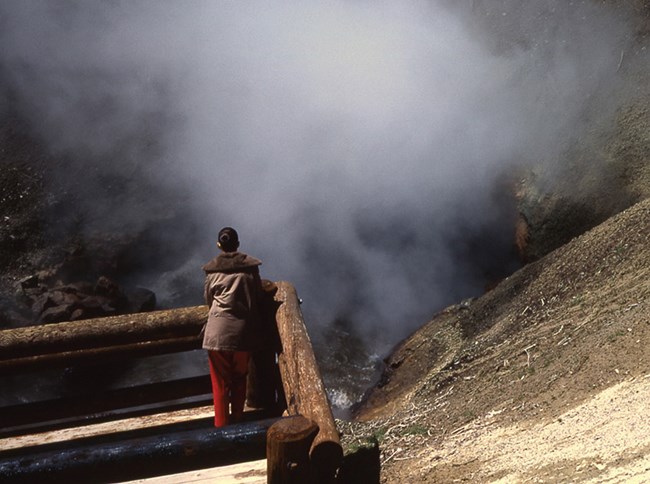
NPS Tribal oral histories indicate more extensive use of the area during the Little Ice Age. Kiowa stories place their ancestors here from around 1400 to 1700 CE. Ancestors to contemporary Blackfeet, Cayuse, Coeur d'Alene, Nez Perce, and Shoshone, among others, continued to travel the park on the already established trails. They visited geysers, conducted ceremonies, hunted, gathered plants and minerals, and engaged in trade. The park's associated tribes report family groups came to lands now part of Yellowstone to gather obsidian, which they used to field dress bison. Some associated tribes used the Fishing Bridge area as a rendezvous site. The Crow occupied the area generally east of the park, and the Blackfeet occupied the area to the north. The Shoshone, Bannock, and other American Indian tribes of the plateaus to the west traversed the park annually to hunt on the plains to the east. Other Shoshonean groups hunted in open areas west and south of Yellowstone. In the early 1700s CE, some American Indian tribes in this region acquired the horse. Some historians believe the horse fundamentally changed their lifestyles because tribal members could now travel faster and farther to hunt bison and other animals of the plains. Tukudika, or Sheep EatersThe Tukudika, or Sheep Eaters, are a band of Mountain Shoshone that lived for thousands of years in the area that would become Yellowstone National Park. Throughout the park, archeological sites reflect use of resources within this landscape by the Tukudika and other American Indian tribes. The Name TukudikaTraditionally, Shoshone names were derived from places the bands traveled to or from foods they hunted or gathered. Tukudika (also Tukudyka’a, Tukadika) means “eaters of the mountain sheep.” The Tukudika lived in northwestern Wyoming, southwestern Montana, and eastern Idaho. Other Shoshone bands bore the names “salmon eaters,” “elk eaters,” and “bison eaters.” Because the name Sheep Eater can appear to equate this American Indian tribe with the bighorn sheep itself, the term was once considered derogatory. The name Sheep Eater suggests a Shoshone social hierarchy on which the Tukudika occupied one of the lowest rungs: whereas other Shoshone bands were hunting and consuming the “grander” bison and elk, the Tukudika were hunting the “inferior,” elusive, mountain-dwelling bighorn sheep. Contemporary understanding of this name is more nuanced. The name does not signify that Tukudika ate only bighorn sheep; it means, simply, that the bighorn sheep was this group’s primary source of meat. Indeed, the Tukudika’s diet consisted of at least 50% plants, roots, nuts, and berries. 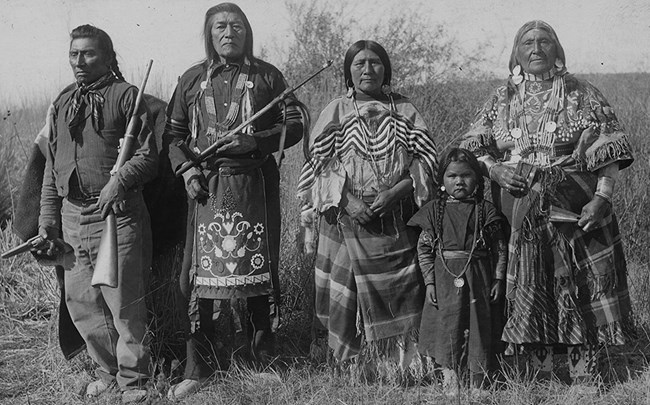
NPS / YELL 10115 Tukudika CultureTraveling in extended-family groups, the Tukudika followed the park’s rivers and streams to hunt game, harvest plants, and find suitable campsites. They traveled to higher elevations in the warmer months and stayed at lower elevations during the colder months. According to the Shoshone-Bannock tribes of southeastern Idaho, some Tukudika stayed in the park year-round. The Tukudika built simple yet versatile shelters composed of curved lodgepole and grass thatching. When situated against a rock face, these newe-gahni (Shoshone houses, houses built to suit a specific purpose) proved sturdy and resistant to the elements. These structures are similar to, but probably distinct from, the wickiup, or conical timber lodge, a structure found throughout the park and associated with several tribes. When they lived in the park, the Tukudika quarried obsidian (dupi or tuupi) at Obsidian Cliff. Working in family groups, tribal members quarried obsidian with shovels made from bison or elk bone. After quarrying the obsidian, the Tukudika worked the material with elk antlers. A cantaloupe-sized rock yielded two to three arrowheads. It is reported that because of its sharpness, obsidian was the primary material for arrowheads and tools. The Tukudika paired arrowheads manufactured from obsidian and other stone materials with welldesigned, extremely durable hunting bows made from the horns and sinews of bighorn sheep. The Indians soaked the horns in geothermal waters to soften them, then shaped the pliable horns into bows. These highly effective bows were sought-after objects which the Tukudika traded with other tribes throughout the Rocky Mountains and the Northern Plains. Sheepskin was used to make distinctive, high-quality clothing, another desirable trade good from this Native American group. The Tukudika were skilled hunters. They designed drive lines and corrals to aid in the hunting of bighorn sheep, and they built fish traps of stone and timber. Unlike most other American Indian tribes of the western United States, including other bands of Shoshone, the Tukudika did not adopt the horse. Instead, they continued to hunt on foot, accompanied by dogs (satii, sadee). These medium to large dogs resembled both wolves and huskies, and served as both work dogs and companions. Some scholars have speculated that hunting on horseback would have hindered the group’s techniques for alpine hunting. Dogs were used to pull travois (two-pole sleds) laden with game or belongings. Evidence that Native Americans, possibly Tukudika, were buried with their dogs has been found throughout the Greater Yellowstone Ecosystem. For cooking and storage, the Tukudika crafted bowls and other containers out of steatite, or soapstone, a metamorphic rock soft enough to scratch with a fingernail. Although steatite is a soft stone, it is surprisingly durable. Steatite deposits are plentiful throughout the Greater Yellowstone Ecosystem, but archeologists have not yet determined whether this material was quarried in the park. Steatite vessels may have been cached and returned to, season after season. The containers may also have been heirlooms or ceremonial vessels transported from site to site. These stone bowls are distinct from Intermountain Ware, a type of pottery made from different clays and tempers and associated with Shoshone groups. EncounterThe stories that a culture creates and transmits are rooted in that culture’s traditions, customs, social mores, and belief system. When two cultures encounter one another, misunderstandings and conflicts can arise. In the Rocky Mountain West, some of the first recorded stories of encounter between European-Americans and American Indians came from Lewis and Clark’s Corps of Discovery expedition of 1804–6. Thirty years later, Osborne Russell, then a young fur-trapper, wrote some of the first descriptions of European-American–Tukudika encounters in the park. In 1835, he met a small group of Tukudika in the Lamar Valley, and he portrayed them favorably, if somewhat romantically. Other explorers and trappers were not so open-minded. Many accounts were one-sided, prejudiced, fearful, or even hostile. These stories and reports failed to consider the American Indian tribes’ agency, self-sufficiency, and vast knowledge of Yellowstone’s landscape and resources. Prior to the establishment of Yellowstone National Park, the military was in the last stages of moving American Indian tribes onto reservations throughout the west. Early park superintendents actively discouraged tribes from visiting the newly established park to hunt or collect resources. ChangeThe Tukudika continued to inhabit the Greater Yellowstone area for several years after Yellowstone National Park was established in 1872. By 1900, the Tukudika were incorporated into the Eastern Shoshone tribe of the Wind River Reservation in central-western Wyoming, and into the Mountain and Lemhi Shoshone and Bannock tribes of the Fort Hall Reservation in southeastern Idaho. Once confined to reservations, the Tukudika suffered the partial collapse of their traditional lifeways. Although the Tukudika continued to live traditionally for a generation or two after their removal to reservations, they eventually adapted to the ways of these other tribes, whose own cultural practices had already been altered by their earlier removal to reservations. Today, some Tukudika descendants live on both of the aforementioned reservations. Some of these descendants prefer the name Mountain People to Tukudika or Sheep Eater for its emphasis upon place rather than food source. 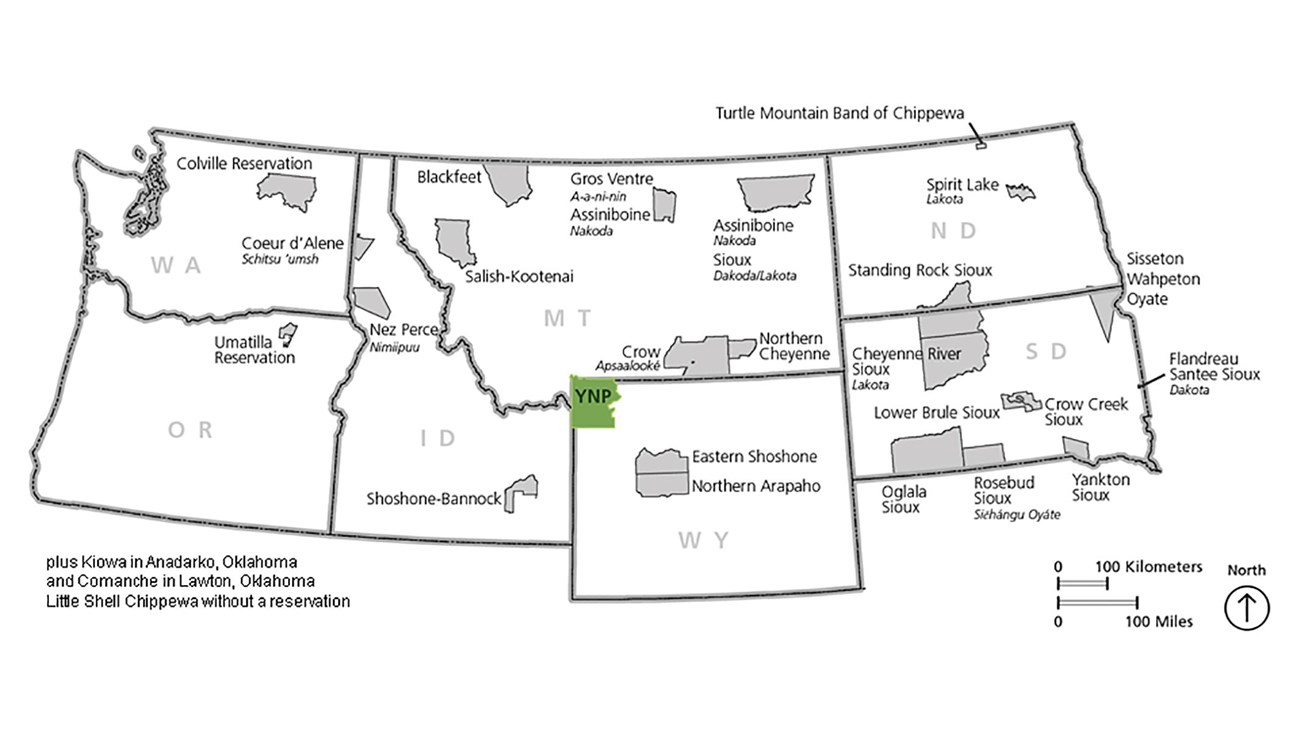
Associated Tribes of Yellowstone
27 tribes have ties to the area and resources now found within Yellowstone National Park. 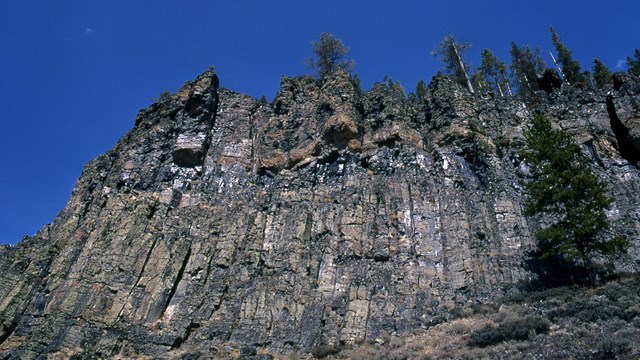
The Earliest Humans in Yellowstone
Human occupation of this area seems to follow environmental changes of the last 15,000 years. 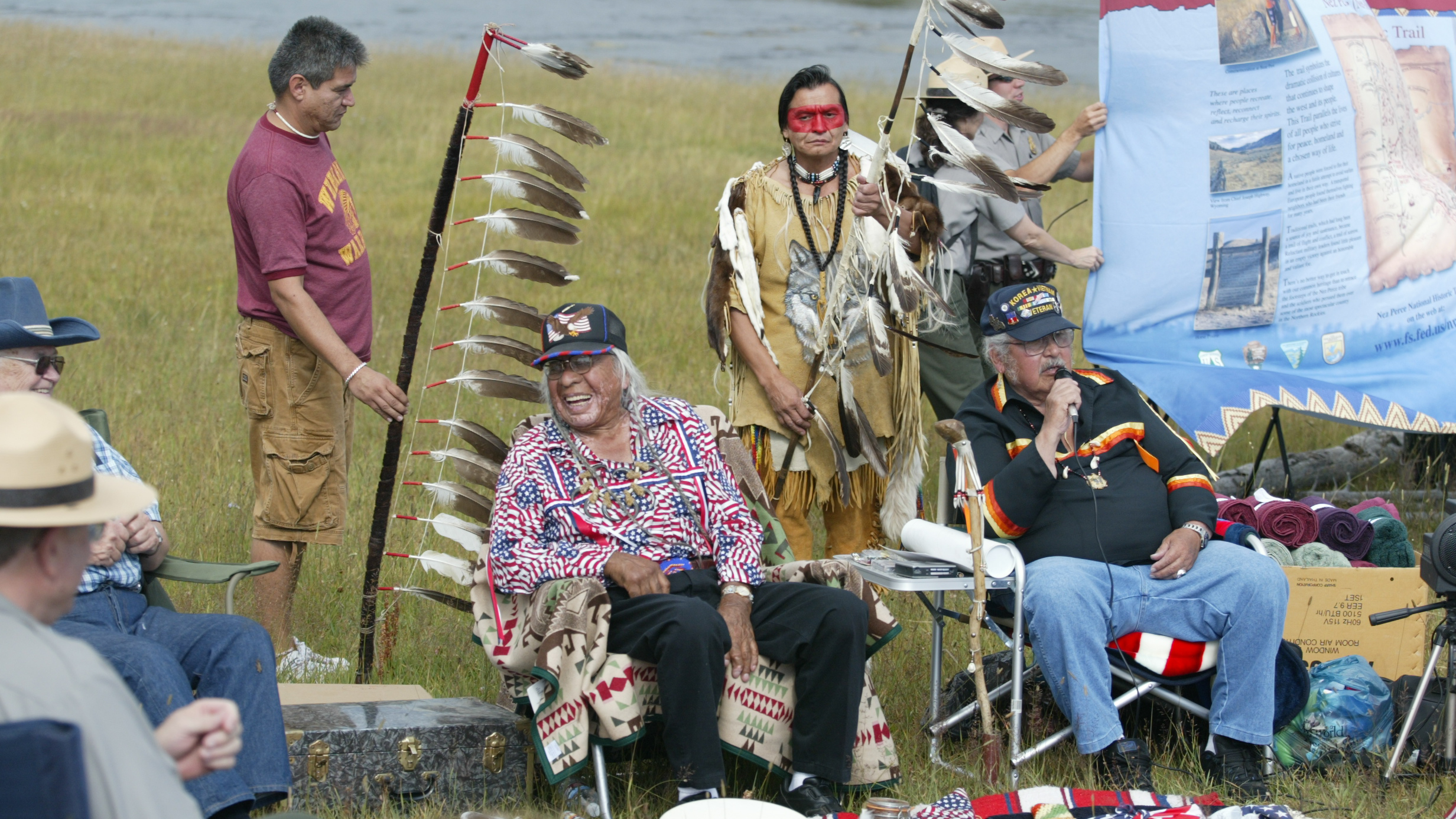
Timeline of Human History in Yellowstone
The human history of the Yellowstone region goes back more than 11,000 years. 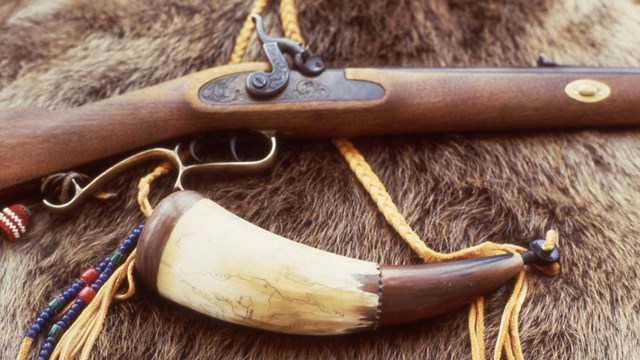
European Americans Arrive
In the late 1700s, fur traders traveled the Yellowstone River in search of Native Americans with whom to trade. 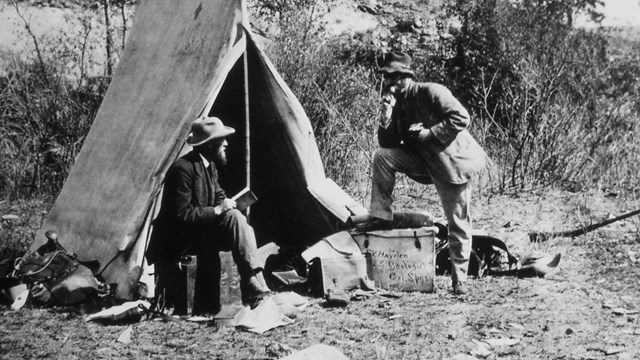
Expeditions Explore Yellowstone
Formal expeditions mapped and explored the area, leading to the nation's understanding of the region. 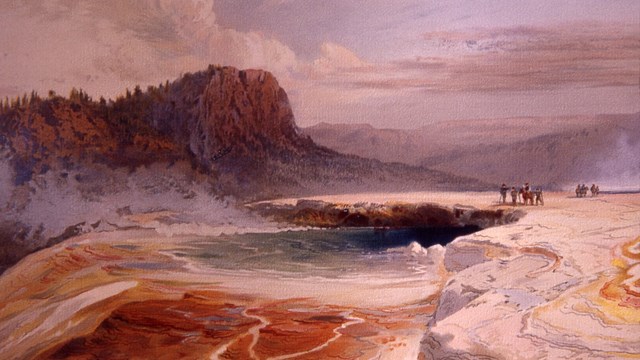
Birth of a National Park
Learn about Yellowstone's early days as a national park. 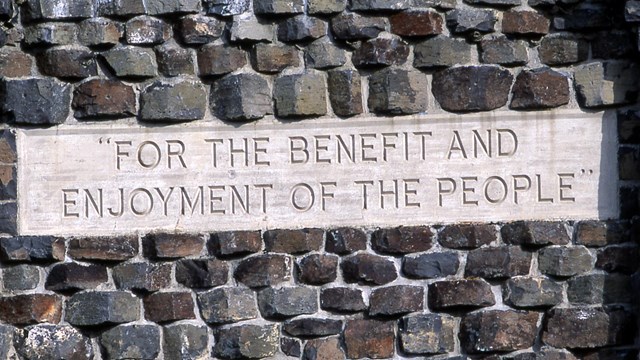
Modern Management
Managing the national park has evolved over time and dealt with some complex issues. 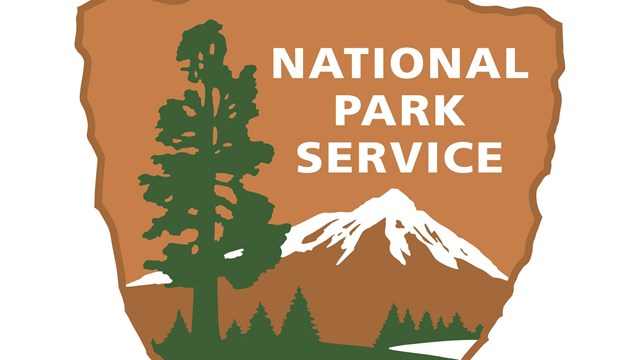
Today's National Park Service
The National Park Service manages over 80 million acres in all 50 states, the Virgin Islands, Puerto Rico, Guam, and American Samoa. |
Last updated: December 9, 2025
